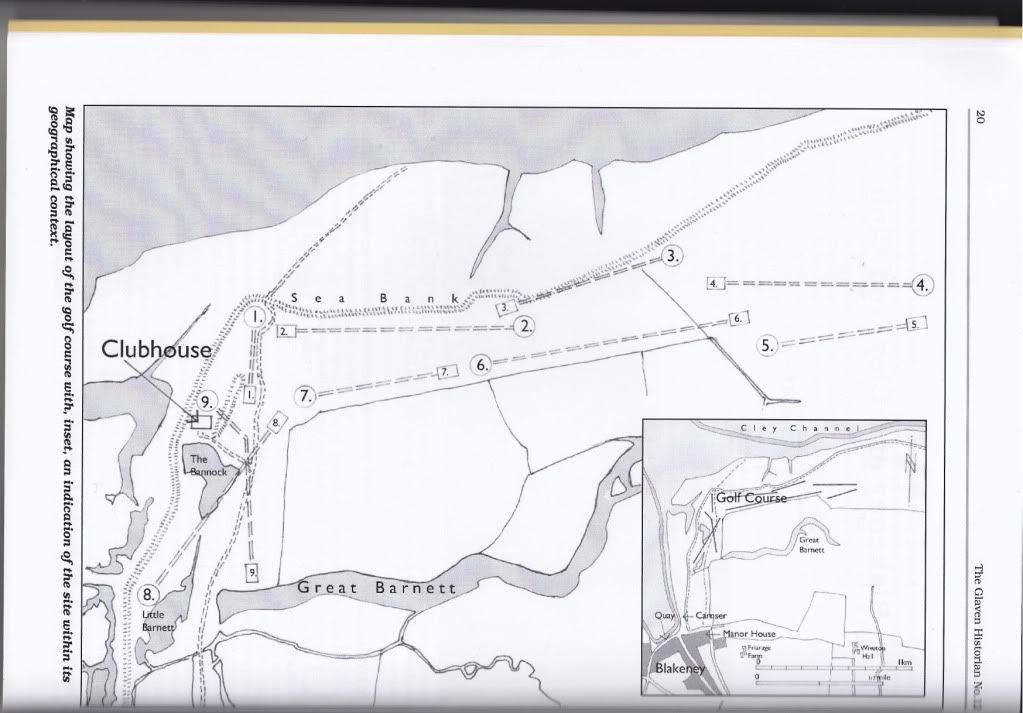In a list of extinct golf clubs and courses I noticed Blakeney and Cley. I stumbled across an article about the club written only last year by Philip Page and John Peake in ĎThe Glaven Historianí, the journal of the Blakeney Area Historical Society No 12 2010.
You would hardly think that there was room for a golf course amid the salt marshes of Blakeney and Cley, but there was! Whatís more Philip Page was a member before the club folded and has been able to bring first-hand knowledge to this article. Iíll not reproduce it. Those who want to read the whole thing can buy their own copies of the journal from the Crabpot bookshop in the Cley High Street. These, however, are the facts that are relevant to us:
The club was founded in the 1890s and opened in 1895. The 9-hole course had two bogey threes, the 1st and 7th, two bogey fives, the 2nd and 6th, the remainder being fours. There was a ladiesí croquet lawn and also tennis courts. There was an artisansí club, Blakeney Workingmenís Golf Club, and when the Blakeney Regatta took place some of the land-based sports events were held on the golf course. The land was rented at a very reasonable sum from a local farmer whose sheep helped maintain the fairways by grazing during the week. The groundsman had no mechanically-driven equipment.
The Second World War ended the club when the course was heavily mined against possible invasion. By the time the mines had been cleared after the war the land had reverted to nature. Discussion has taken place in recent years about possible restoration and there is interest from a local hotel, but as the National Trust now looks after this land as a nature reserve it is unlikely to come to pass. The minute book from foundation to 1938 exists and was passed to the care of the local historical society by Philip Page. (The AGM of 1938 appears to be the last entry but is was countersigned in 1939, so possibly the course survived until the actual outbreak of war).
From the map it is evident that I would have had a dreadful time on this course with my left-handerís slice with OOB on the left of most hole. The 8th might have given Trent Jones ideas for water holes!
